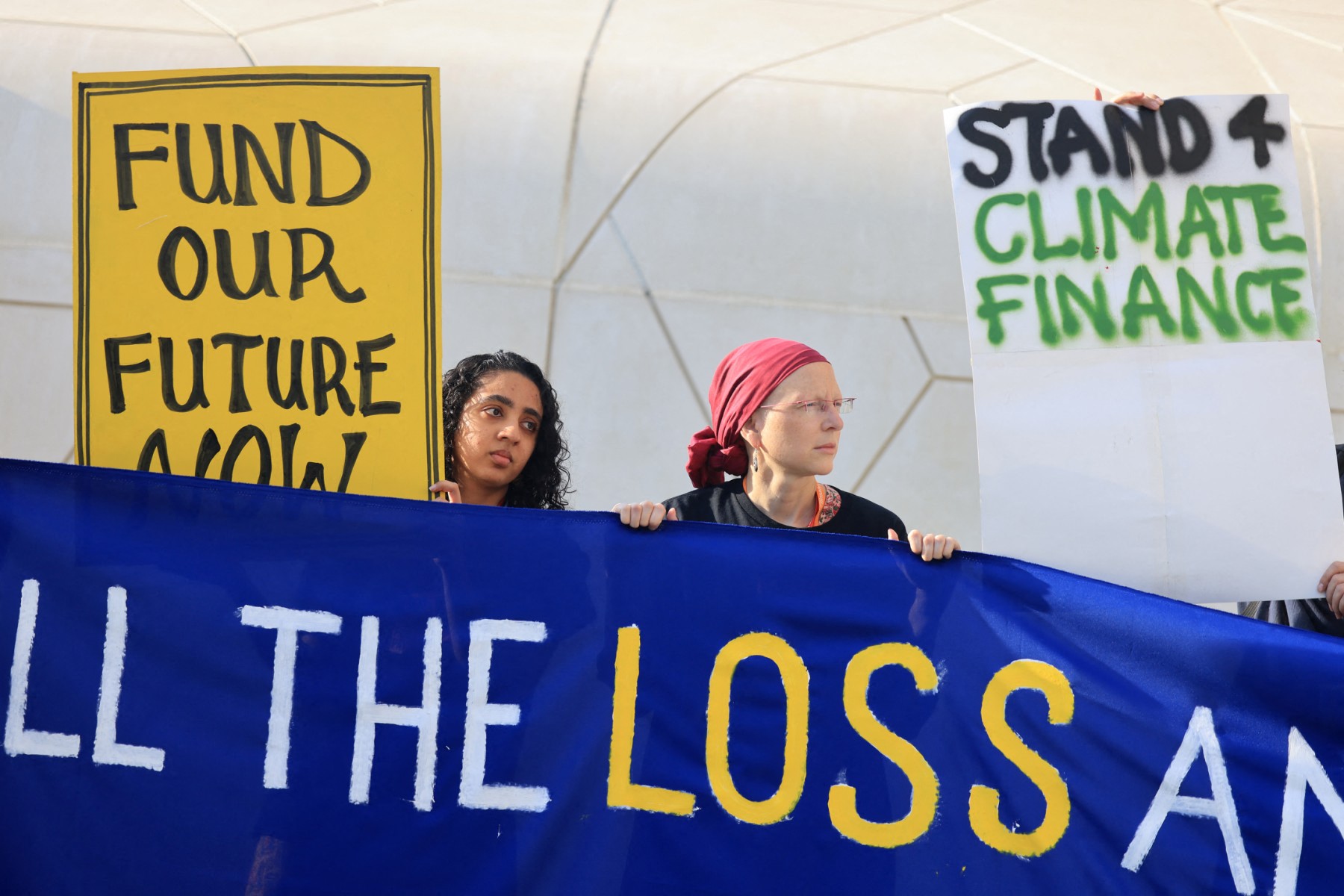Dubai, UAE – All eyes are on COP28 over the next two weeks and for a good reason. In 2023, the world witnessed some of the most catastrophic climatic events in its history, with profound impacts not only on the environment but also on human lives. From intensified natural disasters to health crises and socio-economic instability, the daily survival of people worldwide is at stake.
Food and Water Insecurity
Climate change is impacting worldwide food and water security. Climate extremes pushed 56.8 million people in 12 countries into acute food insecurity in 2022, according to the World Food Program (WFP).
Climate shocks undermining food availability, quality and diversity are the second driver of hunger, right after conflicts. The shifting weather is a direct cause of soil degradation, unstable farming seasons, crop diseases and reduced water availability for drinking and farming.
The amount of freshwater resources per person has decreased by 20 percent in the last 20 years based on UN numbers, and keep on declining as a result of climate change, pollution, and a lack of management.
Mass Displacement and Poverty
Climate change is a key threat to international peace and security. Its effects heighten competition for land, food, and water, with scarce access to sufficient resources. These environmental challenges force populations to move, fueling socioeconomic tensions and leading to mass displacements. UN numbers show that a record 110 million people have left their homes in 2023, due to the increasing number of conflicts and the devastating effects of climate change and other natural disasters.
In Somalia, for instance, nearly 900,000 people have been forced to leave their homes this year as a result of the climate emergency combined with conflict. The outcomes of moving from one place to another include an array of poverty, political unrest, diseases and death.
The World Bank estimates that more than 140 million people in Sub-Saharan Africa, Latin America, and South Asia will be forced to migrate within their regions by 2050 if no serious action is taken.
Increasing Diseases
Alongside temperature-related health conditions due to extreme heat and cold, variations in temperature and rainfall increase the spread of many illnesses, including Lyme disease and dengue fever. In the absence of preventive measures, the number of deaths due to similar diseases, which currently stands at over 700,000 a year, is likely to rise, according to the WHO.
“About half of the world’s population is at risk of dengue, and dengue affects approximately 129 countries,” said Dr Raman Velayudhan, WHO’s Head of the Global Program on Control of Neglected Tropical Diseases.
“We estimate that about 100 to 400 million cases are reported every year”, warns the expert.
In some countries, shorter winters could increase the time during which humans are exposed to Lyme disease, as ticks – the root cause of Lyme, could survive for longer periods.
Temperature-related Impact
Countries, like India, Pakistan, and Bangladesh, face many deaths in extreme heat, particularly in densely populated urban areas.
Recent research attributes 37 percent of heat-related deaths to human-induced climate change. Heat-related deaths among people over 65 have increased by 70 percent in two decades. Vulnerable populations, such as the elderly or those with limited access to adequate shelter, are those who face the most heightened risks.
In contrast, other countries are facing extreme cold. January 2023 saw a brutal cold in parts of Asia. In the northern Chinese city of Mohe, temperatures plunged to minus 53 degrees Celsius (minus 63.4 degrees Fahrenheit), the lowest ever recorded in the country, according to CNN. Colder weather can make it difficult for the elderly or those who live far from adequate heating. In Afghanistan, more than 160 people died from a cold snap during January 2023, the country’s harshest winter in more than a decade.
Mental Health Issues
Climate change affects mental health in multiple ways, from post-traumatic stress disorder (PTSD) to job loss.
The surge in extreme weather events is increasing PTSD, anxiety, and depression among survivors of hurricanes, wildfires, and floods. However, only 9 in 95 countries included mental health and psychosocial support in their national health and climate change plans according to WHO.
Environmental alterations like rising temperatures and air pollution intensify irritability, anxiety, and sleep disturbances.
Moreover, eco-anxiety and constant concerns about the planet’s future contribute significantly to the mental strain experienced by individuals.
With the countless repercussions of extreme weather conditions, the planet is witnessing increasing political unrest, deaths and diseases. There’s an element of socioeconomic injustice to this crisis. People who are most affected by the climate crisis are those who contribute least to its causes, according to UN data. As our world witnesses the impact of climate change on human lives, COP28 is all about forging strategies and policies to ensure a more secure future for our global communities.








